Marble is a material that is synonymous with opulence. The styles stone masons coax out of marble slabs or tiles add an air of sophistication to your home. From foyers to living rooms and kitchens to bathrooms, marble flooring is a showstopper in any living space.
 Having said that, people always wonder about how to clean marble floors at home. However, the process is more straightforward than you’d think, as you’ll find below.
Having said that, people always wonder about how to clean marble floors at home. However, the process is more straightforward than you’d think, as you’ll find below.
 Marble is more porous than other flooring materials like quartz, granite, or even soapstone and can easily absorb standing liquids and water. As such, it is vulnerable to physical changes like discolouring or etching, i.e. scratching, thus requiring special attention and care to keep the marble flooring in top quality and shape.
Marble is more porous than other flooring materials like quartz, granite, or even soapstone and can easily absorb standing liquids and water. As such, it is vulnerable to physical changes like discolouring or etching, i.e. scratching, thus requiring special attention and care to keep the marble flooring in top quality and shape.
You can thus protect your valuable investment in marble with the following techniques:
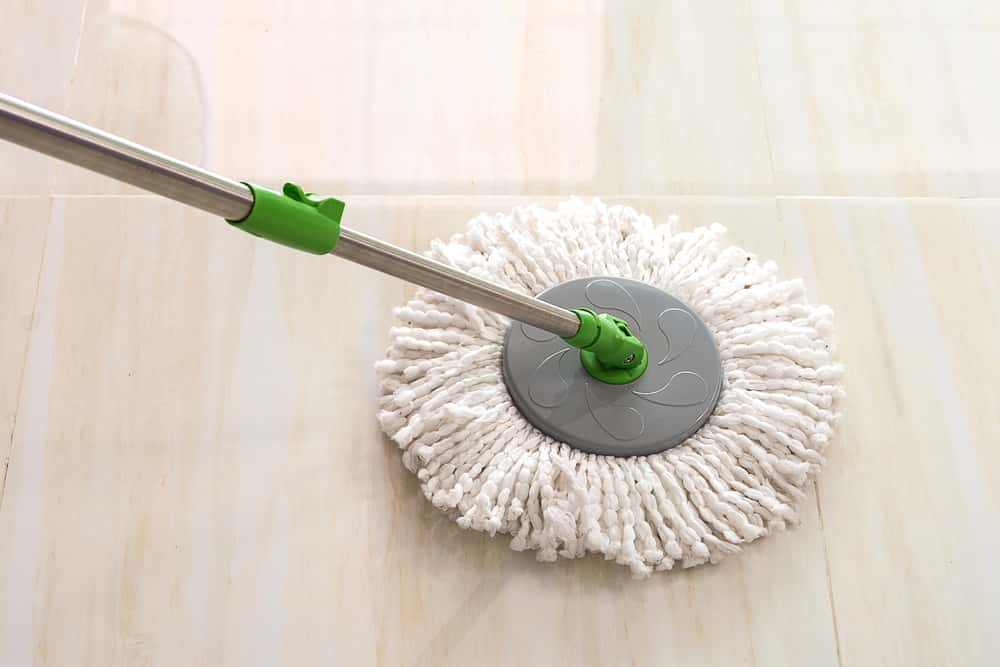 Pollutants like abrasive dirt, dust particles, and grit often dull the lustrous finish seen on marble flooring and cause scratches. To prevent this, a good rule of thumb is to sweep the marble floor daily with a dry dust mop or a soft broom, especially if the presence of grit and abrasive dust is rampant.
Pollutants like abrasive dirt, dust particles, and grit often dull the lustrous finish seen on marble flooring and cause scratches. To prevent this, a good rule of thumb is to sweep the marble floor daily with a dry dust mop or a soft broom, especially if the presence of grit and abrasive dust is rampant.
You may mop the stone surface twice a week, if not daily. You can also use clean water and a wrung-out mop to avoid soaking the floor. Alternatively, you may apply a liquid cleansing solution per the manufacturer’s instructions.
As marble occasionally has iron oxide, the presence of water may cause rust stains. However, mopping twice a week ensures the preservation of sensitive marble surfaces. You can also opt to deep clean your marble floors only once a month for better results.
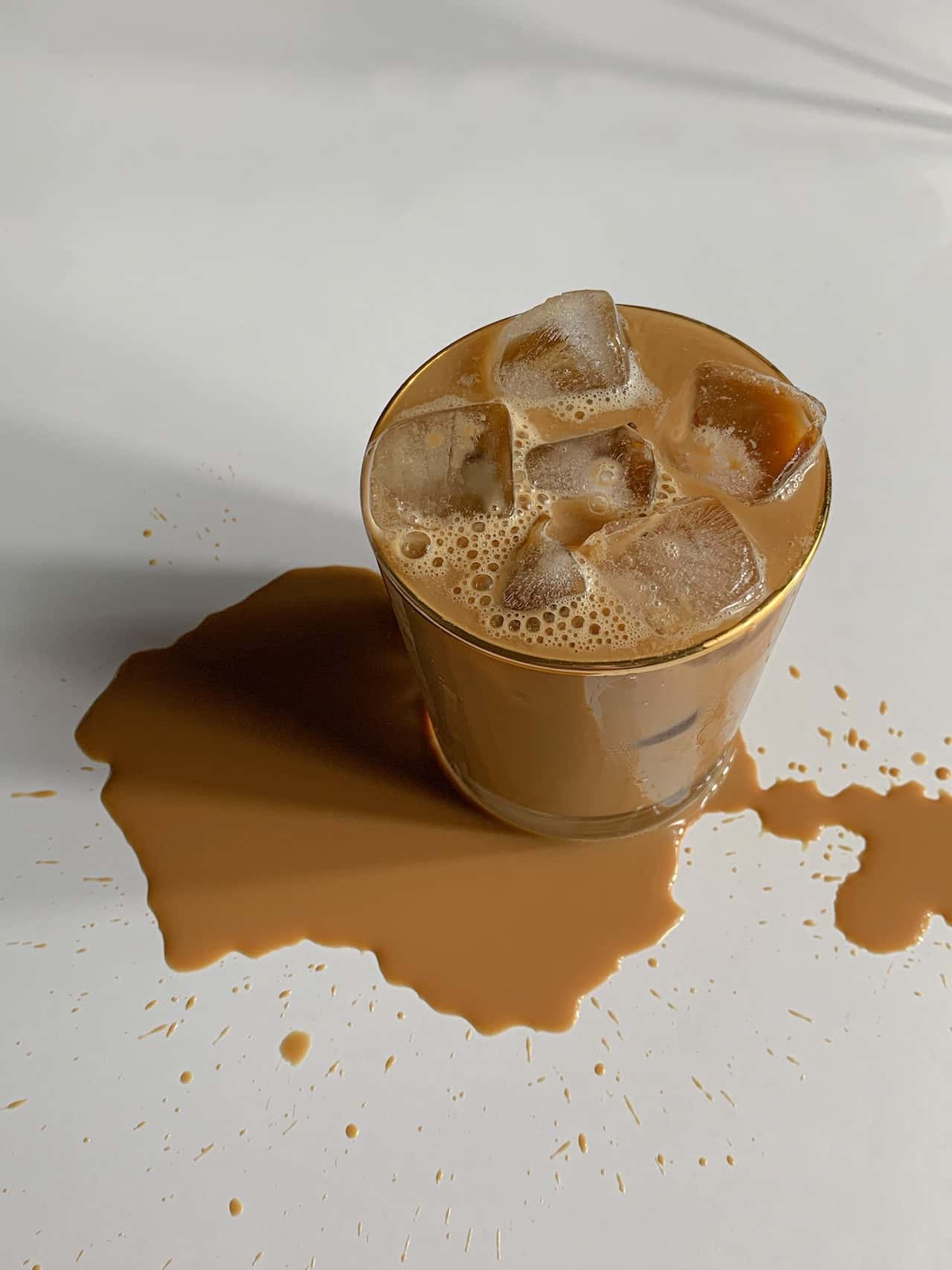 One of the best tips on how to clean marble floor stains is to maintain their sleek and luxurious texture by cleaning any stains when they occur on the table. A more extended waiting period may lead to the stains becoming a permanent fixture on your floors.
One of the best tips on how to clean marble floor stains is to maintain their sleek and luxurious texture by cleaning any stains when they occur on the table. A more extended waiting period may lead to the stains becoming a permanent fixture on your floors.
As for the technique of answering the question of how to remove stains from marble floor? You can immediately blot up the fresh stain with a soft, damp cloth while ensuring that you do not spread the stain by smearing or wiping it elsewhere on the floor.
You may also use mild soap or water to treat it.
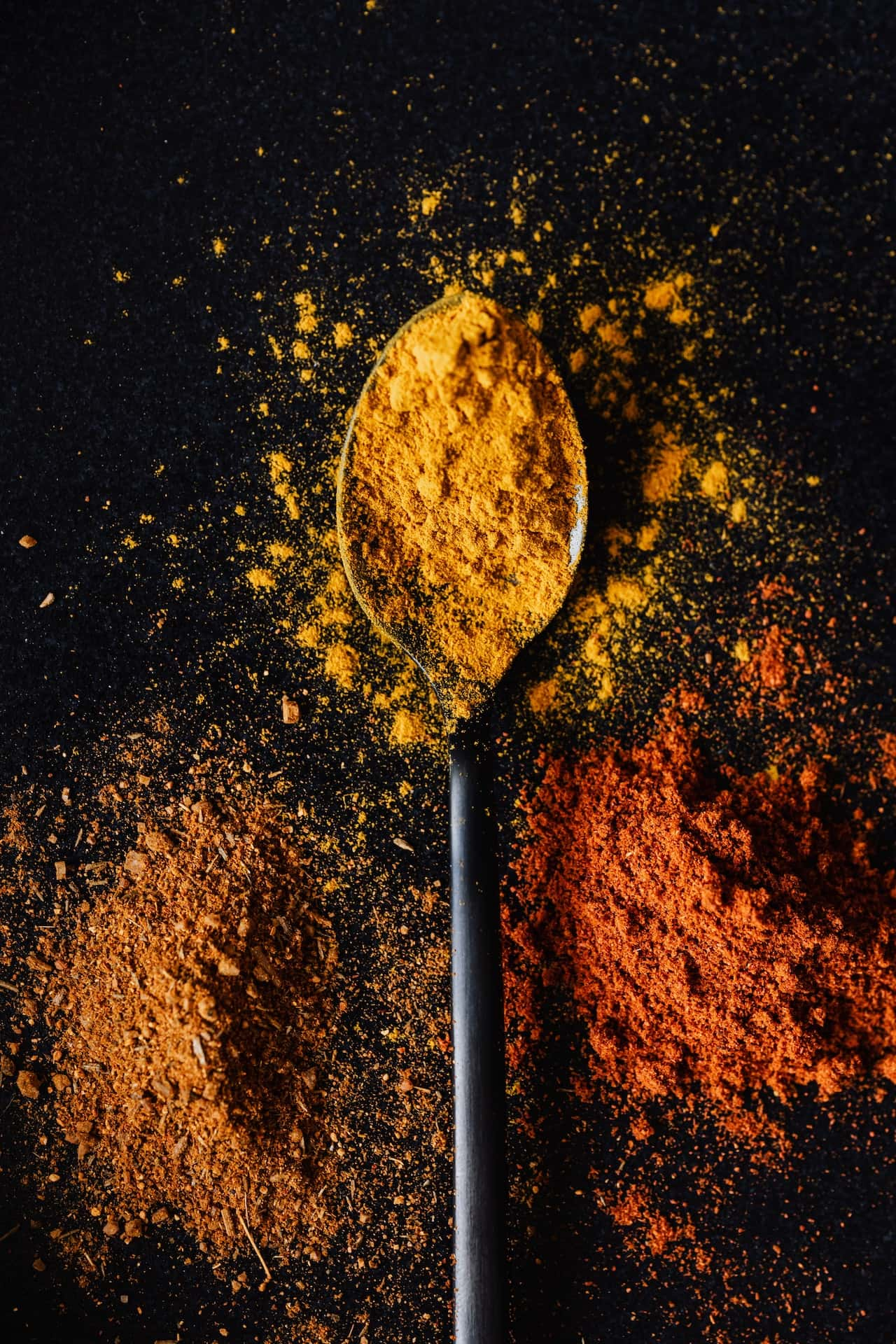 Sometimes, some stains refuse to come off despite your best efforts. These stains are usually the result of accidentally spilling wine, tea, or turmeric.
Sometimes, some stains refuse to come off despite your best efforts. These stains are usually the result of accidentally spilling wine, tea, or turmeric.
Now, organic stains caused by spices, fruit, coffee, and tea can be treated with a few drops of ammonia and a solution containing 12% hydrogen peroxide by:
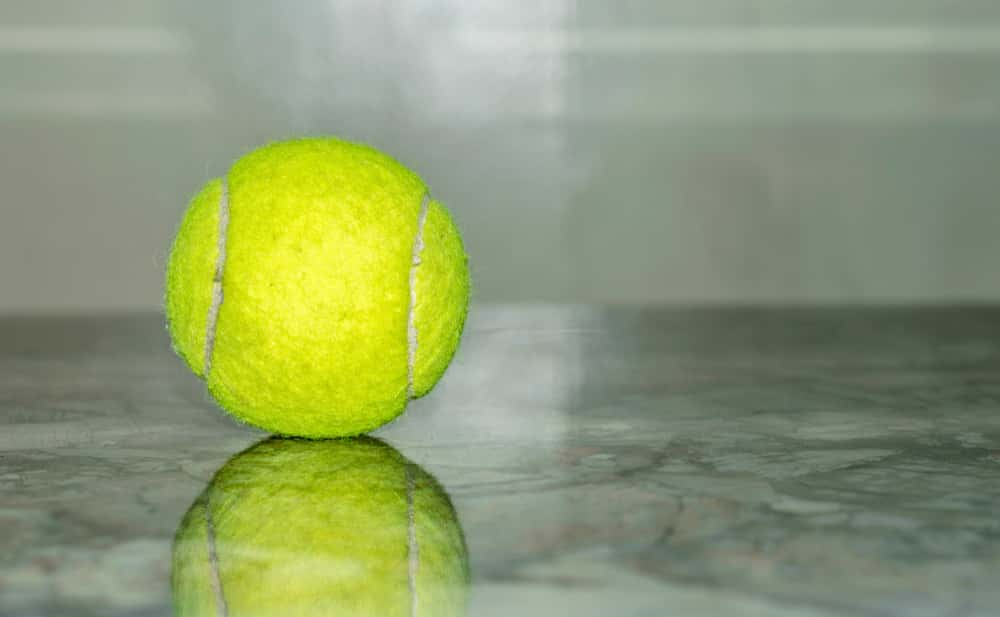 Scuff marks are commonly caused by shoes, heels, or dragging furniture across the marble floor. While most scuff marks come off when you mop regularly, a few pesky scuffs can be treated with an age-old trick.
Scuff marks are commonly caused by shoes, heels, or dragging furniture across the marble floor. While most scuff marks come off when you mop regularly, a few pesky scuffs can be treated with an age-old trick.
You can answer your question regarding how to clean marble floors for scuff marks by:
The soft felt material of the ball will safely lift the scuff out.
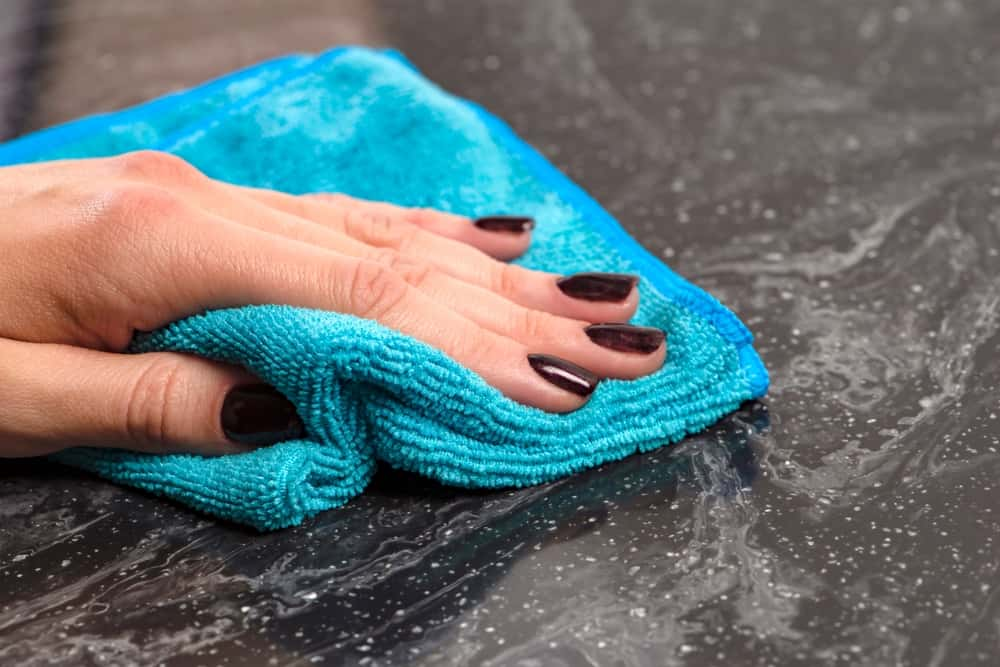 Using sealant chemicals protects your marble flooring against grease and spills. While sealants don’t make the marble entirely stain-proof, they make it stain-resistant. You can apply sealants generously on the stone surface and leave the floor for a required time to allow the chemicals to penetrate the stone.
Using sealant chemicals protects your marble flooring against grease and spills. While sealants don’t make the marble entirely stain-proof, they make it stain-resistant. You can apply sealants generously on the stone surface and leave the floor for a required time to allow the chemicals to penetrate the stone.
If you use sealants on kitchen countertops, coffee tables, or other high-traffic marble surfaces from the house, ensure the sealant is food safe. You may want to contact your manufacturer to get their recommendation on using the right product and its safety. Usually, it is recommended to take professional help to seal your marble floors.
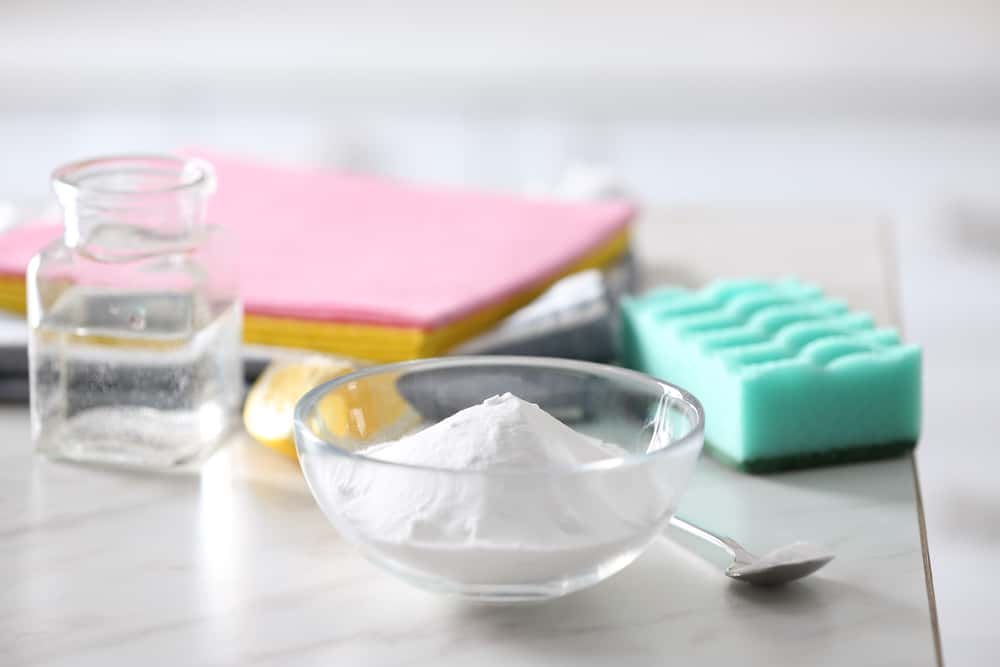 You may also use baking soda, which is a mildly abrasive cleaner. However, since it is alkaline, it should not be left on the stone surface for too long. Prolonged exposure to the chemical may dull the glossy marble border design.
You may also use baking soda, which is a mildly abrasive cleaner. However, since it is alkaline, it should not be left on the stone surface for too long. Prolonged exposure to the chemical may dull the glossy marble border design.
To clean the stain, sprinkle a small amount of baking soda and gently rub it off with a damp cloth. Using water to neutralize the alkaline is also an excellent solution to treat tough stains. Dry the spot with a soft towel, and make sure you don’t scrub the stain aggressively.
 To limit the amount of abrasive dirt in high-traffic areas, you can place non-skid carpets and rugs. Floor coverings track dust and grit carried off by shoes or house pets, preventing the marble floor from being damaged. Using doormats, especially around the entrance, will make your job easier.
To limit the amount of abrasive dirt in high-traffic areas, you can place non-skid carpets and rugs. Floor coverings track dust and grit carried off by shoes or house pets, preventing the marble floor from being damaged. Using doormats, especially around the entrance, will make your job easier.
You may use colourful rugs and carpets with unique patterns to show off your style. As marble tends to get cold, the rugs are also helpful to keep your feet warm.
Marble has a timeless appeal and makes for fabulous flooring. However, it is notorious and highly susceptible to stains. If you are wondering ‘how to clean white marble floors at home,’ it’s probably best to use only specific cleaning agents to avoid damage by:
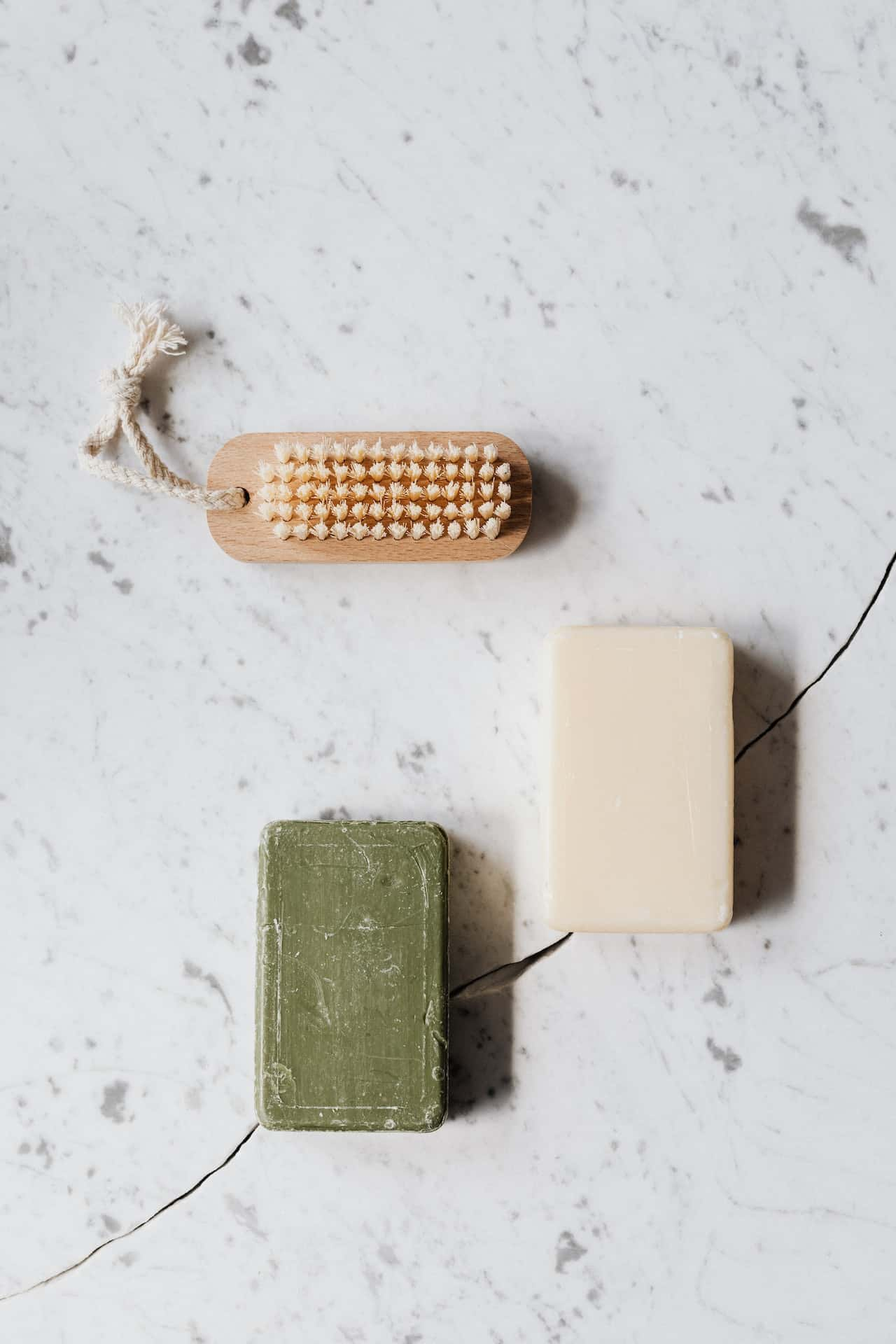 Stay clear of scrubbing brushes and beater rolls to clean marble floors. Harsh floor care tools are likely to cause scratches, cracks and damage to the porous marble surface.
Stay clear of scrubbing brushes and beater rolls to clean marble floors. Harsh floor care tools are likely to cause scratches, cracks and damage to the porous marble surface.
 Forego vacuum cleaners, as the wheels, brushes, or rollers of the vacuum cleaner, can damage and scratch the marble flooring.
Forego vacuum cleaners, as the wheels, brushes, or rollers of the vacuum cleaner, can damage and scratch the marble flooring.
Invest instead in a dry mop with a soft microfiber cloth. Its long handle makes it convenient to use and effectively traps dust and dirt while also being gentle on the surface.
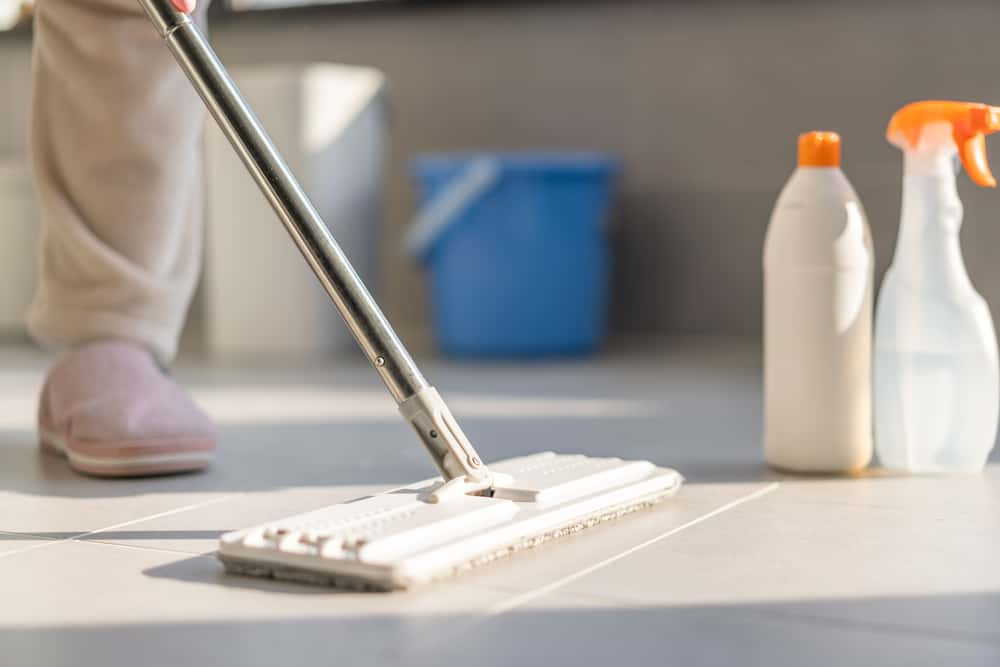 Using harsh floor cleaners on a highly calcareous stone like marble is a recipe for disaster. You should choose pH-neutral floor detergents as they are safe to use on marble. Other commonly-used cleaners on marble flooring include citrus- and vinegar-based and ceramic floor cleaners.
Using harsh floor cleaners on a highly calcareous stone like marble is a recipe for disaster. You should choose pH-neutral floor detergents as they are safe to use on marble. Other commonly-used cleaners on marble flooring include citrus- and vinegar-based and ceramic floor cleaners.
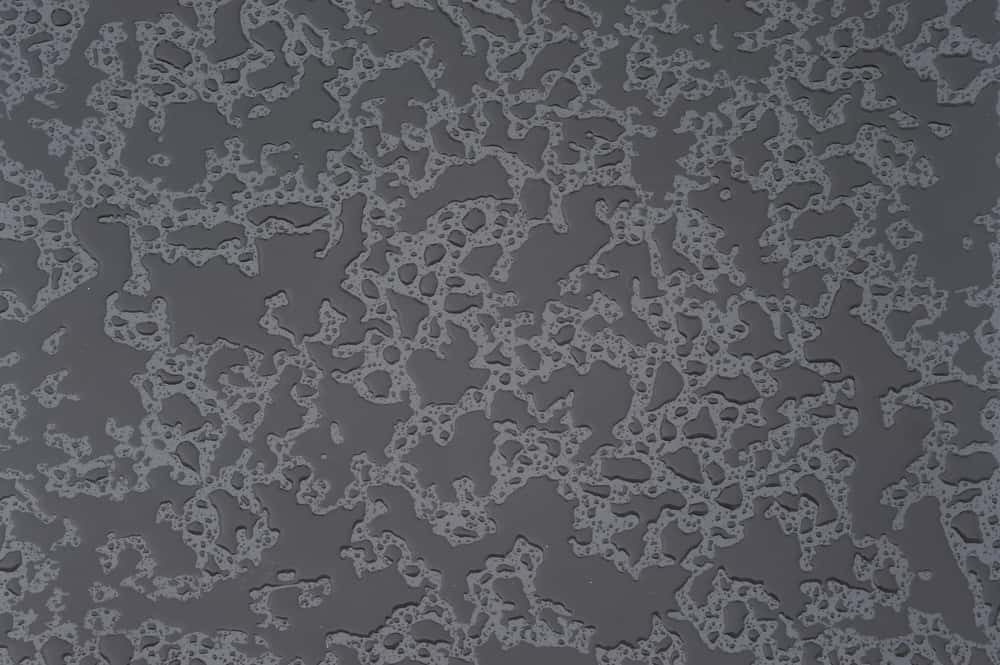 Since marble is porous, it absorbs water and detergent. After you wipe the marble floor with mild soap water, use a soft clean cloth to dry the floor. Allowing the marble floor to air dry may stain or discolour the floor.
Since marble is porous, it absorbs water and detergent. After you wipe the marble floor with mild soap water, use a soft clean cloth to dry the floor. Allowing the marble floor to air dry may stain or discolour the floor.
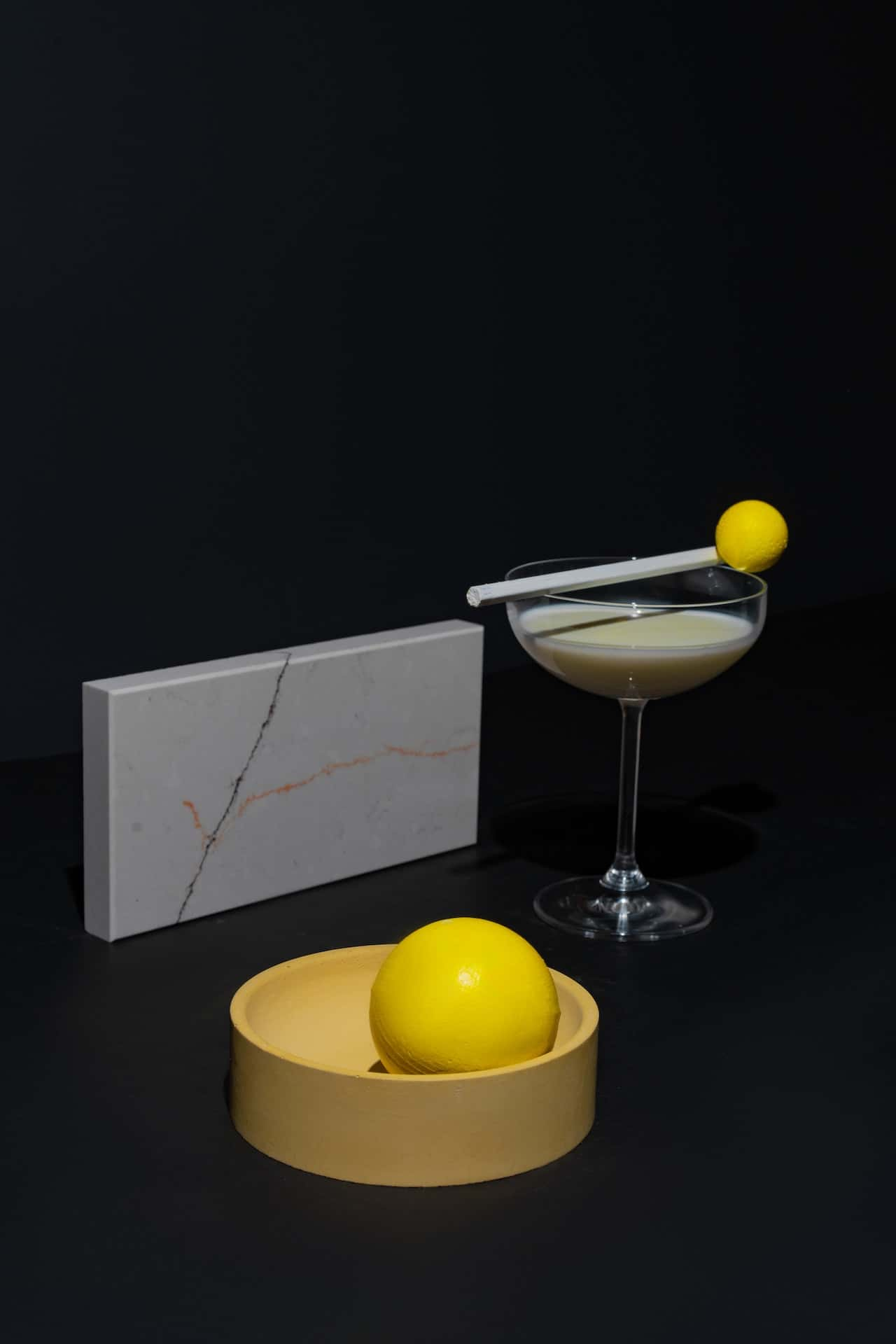 Avoid spilling vinegar and lemon juice on marble. Vinegar contains a pH level of two to three, and its acidic nature may damage the marble surface with dull spots known as etching.
Avoid spilling vinegar and lemon juice on marble. Vinegar contains a pH level of two to three, and its acidic nature may damage the marble surface with dull spots known as etching.
Even the simple task of cutting lemons directly on a marble kitchen counter is a big no as marble is susceptible to acids. If you spill things like lemon juice, wine or vinegar, tend to the stains as quickly as possible.
In case of severe etching, the spots may need to be polished by a professional—so be careful where you leave your cut lemons!
Marble is a versatile stone. It can conquer elegance in both public and private interiors. Just as knowing how to clean marble floors is essential, knowing which slab or style of marble to choose for your home interiors is equally crucial.
You can choose between natural and cultured marble for your home.
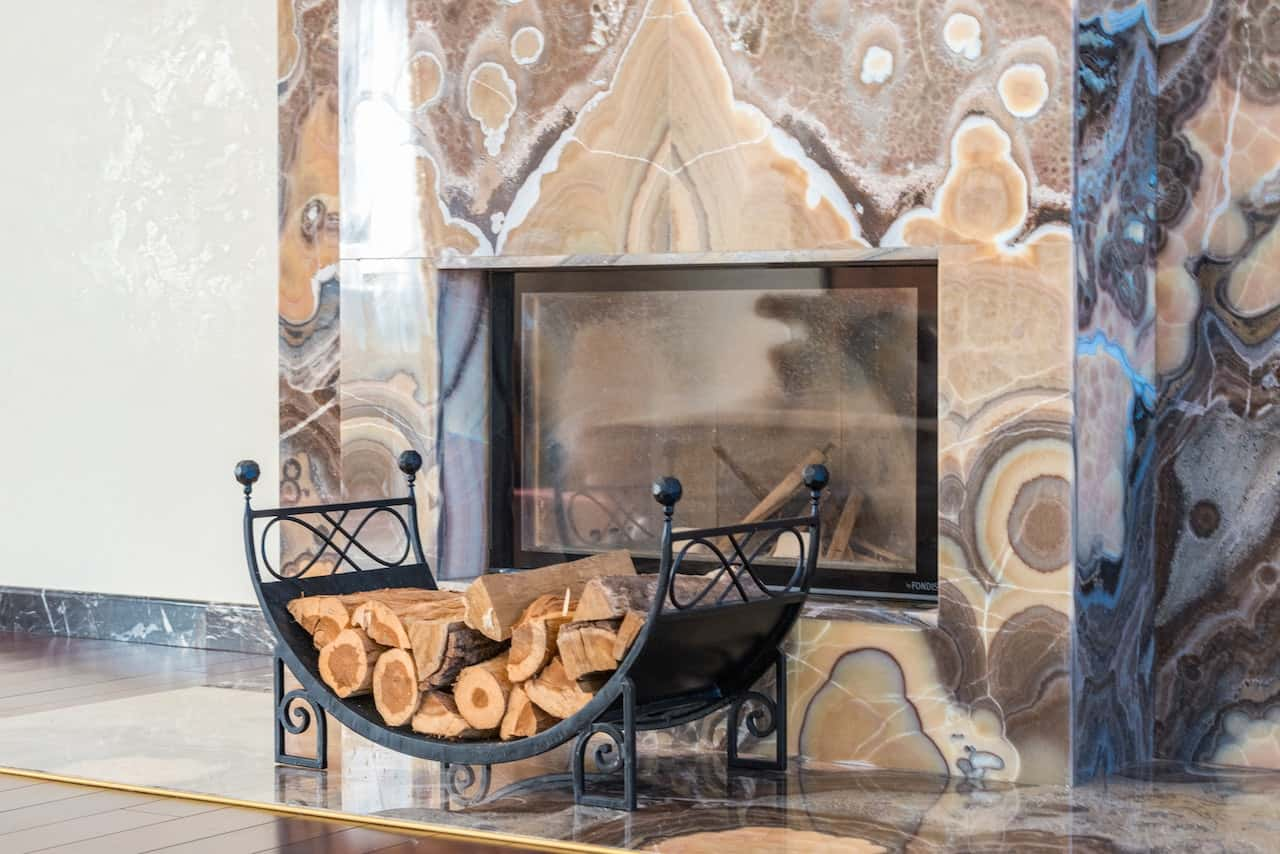 Natural or real marble is a luxury natural stone made of calcite and quarried from the Earth. This high-end stone creates an aesthetic richness with its natural veining design.
Natural or real marble is a luxury natural stone made of calcite and quarried from the Earth. This high-end stone creates an aesthetic richness with its natural veining design.
The presence of dolomite and limestone in the natural stone usually determines the variety of colours and veins. It is popular for its veining patterns, and no slab of natural marble is ever identical.
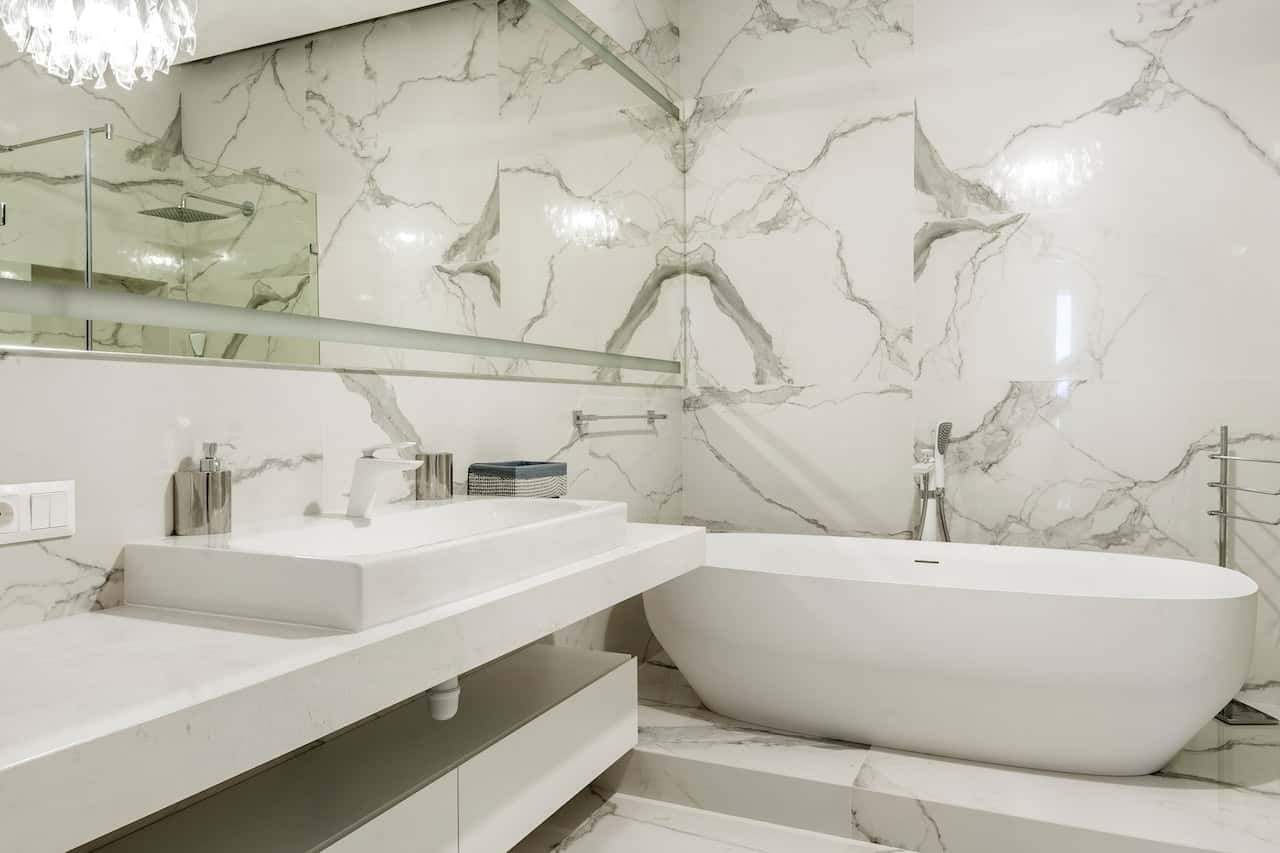 On the other hand, cultured marble is artificial, created by mixing polyester resins, dyes and pulverized natural marble.
On the other hand, cultured marble is artificial, created by mixing polyester resins, dyes and pulverized natural marble.
Cultured marble is less porous than natural marble because its surface is coated and sealed with a finishing gel. As a result, cultured marble is also more lustrous and glossy. Since cultured marble is human-made, creative play colours are often coupled with the beauty of uniform and stylistic veined patterns.
Cultured marble is a popular choice in luxurious bathrooms and vanity tops. If you want to know how to clean marble floor in bathroom, choosing cultured marble is a wise solution as it is water-resistant.
Although both types of marble are vulnerable to acids and stains, harsh chemicals are more likely to damage the sensitive surfaces of natural marble. Using non-abrasive cleaners and tools is often the best choice when it comes to cleaning marble bathroom floors.
 Designers and architects have recently embraced marble’s grandeur in their architectural creations. With the timeless appeal of its veins to the warm nuances in its colours, from the intensity of its dark hues to mesmerizing colour effects, the novelty of marble flooring lifts the appearance of your abode. It adds aesthetic richness to your living room design.
Designers and architects have recently embraced marble’s grandeur in their architectural creations. With the timeless appeal of its veins to the warm nuances in its colours, from the intensity of its dark hues to mesmerizing colour effects, the novelty of marble flooring lifts the appearance of your abode. It adds aesthetic richness to your living room design.
HomeLane can help you adapt to all the marble’s contemporary uses, including expertise in installation, cleaning solutions, and application of its decorative richness.
The best material to clean marble floors is a soft cloth or high microfiber mops. Use pH-neutral soap detergents to clean the surface. The best tip for cleaning white marble floors is to avoid using traditional vacuum cleaners or harsh floor cleaning equipment, as it may cause scratches and scuff marks.
You can follow these simple and practical steps for how to clean marble floors daily:
A mixture of baking soda and water is regarded as the best remedy for how to remove stains from marble floor to make the floor shine naturally. Mix well three tablespoons of baking soda with 1 quart of water. Use a clean cloth or towel to apply the mixture evenly in a thin layer. Leave it for 5 hours to dry.

 EXPLORE MORE
EXPLORE MOREExplore This Vibrant Bangalore Home That Revels in the Interplay of Patterns and Textures!
This Stunning Chennai Home Channels Nuanced Character and Tonality
Step Into This Minimal Chennai Home, and Get Wrapped in Comfort!
This Compact Chennai Apartment Is an Ode to Smart Design and Functionality!
 EXPLORE MORE
EXPLORE MOREExplore This Vibrant Bangalore Home That Revels in the Interplay of Patterns and Textures!
This Stunning Chennai Home Channels Nuanced Character and Tonality
Step Into This Minimal Chennai Home, and Get Wrapped in Comfort!
This Compact Chennai Apartment Is an Ode to Smart Design and Functionality!
By submitting this form, you agree to the privacy policy and terms of use